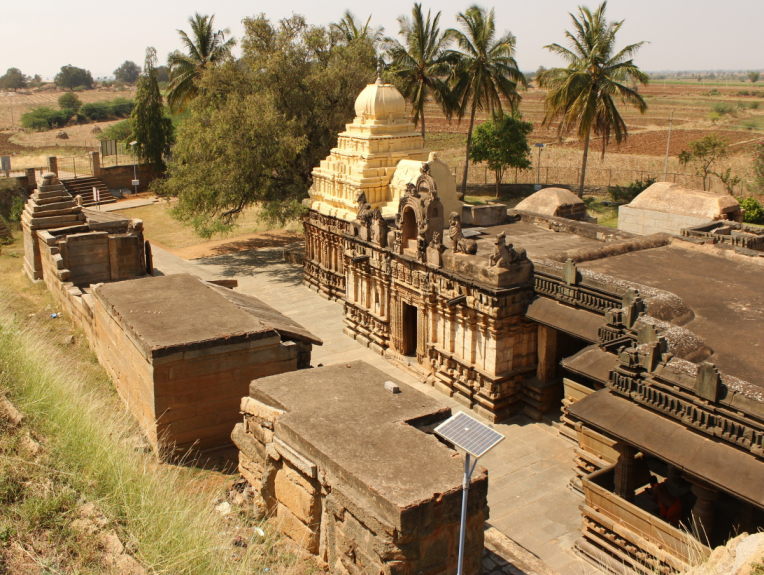13th-Century Inscription Uncovered at Kalleshwar Temple Renovation
Why in the news?
- A 13th-century stone inscription (Veeragallu) was recently discovered during the renovation of the ancient Kalleshwara Temple, highlighting its historical significance and rich heritage.
- The temple is dedicated to Lord Shiva and is located in Bagali, Davangere district, Karnataka.
Historical Background:
- The Kalleshwar Temple was built during the rule of two Kannada dynasties: the Rashtrakuta Dynasty in the mid-10th century and the Western Chalukya Empire under King Tailapa II around 987 AD.
- It is one of the oldest temples in the region and holds historical significance.
Architectural Highlights:
- The temple is a single shrine structure facing east, with a sanctum, an antechamber (antarala), and two halls (sabhamantapa and mukhamantapa).
- The Shikara (tower) of the temple represents early Cholan architecture.
- The temple contains a large Shivalinga, believed to be over a thousand years old.
- It is a protected monument of national importance under the Archaeological Survey of India.
About Veeragallu:
- The stone inscription from 1283 AD is made of charcoal stone, measuring 4 feet by 5 feet.
- It honours Ramachandra Chakravarti of the Sevuna dynasty, known as Yadava Narayana Bhujbala Praudhapratapa Chakravarti.
- The lower part depicts two heroic brothers, Bhoja Narayana and Vambhava, in battle, defending cattle.
- The central portion shows their journey to Kailasa, and the top illustrates their worship of a Shivalinga.
About Sevuna Dynasty:
- The Sevuna dynasty ruled parts of Karnataka and Maharashtra and became independent in the 12th century.
- Ramachandra Chakravarti, ruling from 1271-1312 AD, was known for his military success and cultural contributions.
Key facts about Kalleshwar Temple:
- Built during the Rashtrakuta (mid-10th century) and Western Chalukya dynasties (987 AD), dedicated to Lord Shiva.
- Famous for intricate soapstone architecture, it features a main shrine, open hall, and eight smaller shrines.
- Protected by the Archaeological Survey of India.
About Archaeological Survey of India (ASI):
- Established: 1861 by Alexander Cunningham; became a statutory body post-independence under the Ancient Monuments and Archaeological Sites and Remains Act, 1958.
- Role: Responsible for archaeological research and the conservation and preservation of cultural monuments across India.
- Key Activities:
- Surveys of antiquarian remains.
- Exploration and excavation of archaeological sites.
- Conservation and maintenance of protected monuments.
- Ensures the protection and study of India’s vast historical heritage.
Sources Referred:
PIB, The Hindu, Indian Express, Hindustan Times





